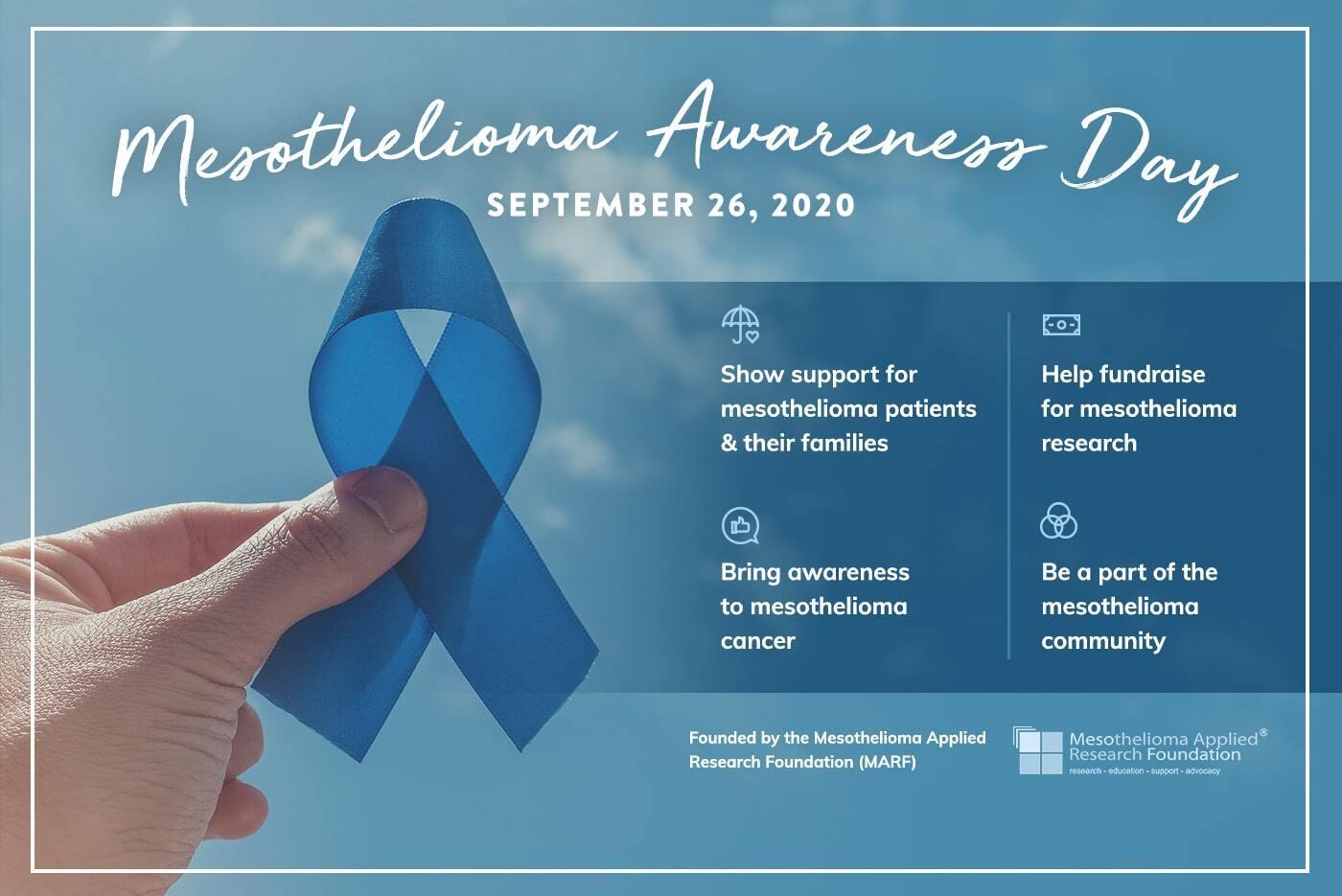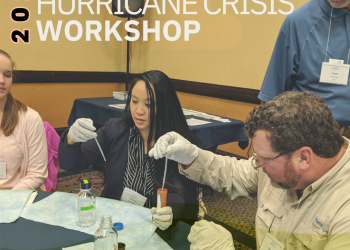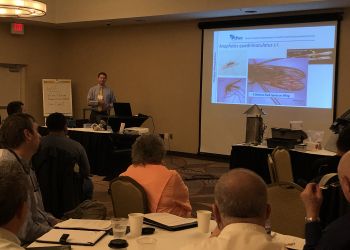NACCHO’s Environmental Health staff sourced Mesothelioma Awareness Day advocates to collaborate on this post in honor of this Day.
This year, September 26 marks the 17th anniversary of Mesothelioma Awareness Day (MAD), and sparks an opportunity for advocacy, prevention, and education for this cancer.
Mesothelioma is the most common diagnosis following asbestos inhalation or ingestion. At the beginning of the 1900s, a stronger correlation between asbestos, lung scarring, and mesothelioma was established. In those times, workplaces exploited asbestos rampantly. Moreover, there are other diseases tied to this toxin. A disease that can develop years later is asbestosis, where fibers become stuck in lung tissue and lead to inflammation and scarring over time. This damage to the lungs results in a chronic lung condition.

From 1940 to 1979, the Agency for Toxic Substances and Disease Registry discovered that around 27 million employees were exposed to asbestos while working. In addition to this, there may be over 125 million people globally who may have been exposed to asbestos, according to the World Health Organization. Over the course of nine years, concluding in 2014, the Centers for Disease Control and Prevention (CDC) compiled data revealing that there were more than 40,000 people who died from malignant mesothelioma, and seventy percent of the deaths were caused by occupational exposure to asbestos.
Occupations that handled or had asbestos on-site include shipyard, industrial, and construction workers, farmers, and engineers. One of the biggest concerns regarding asbestos exposure is the way its microscopic fibers can latch onto clothing, potentially endangering the lives of many more beyond the person who was in direct contact with asbestos. Any disruption to this mineral can subsequently lead to inhalation; and if it is damaged, it can become airborne.
Until the 1960s, asbestos was not even considered a carcinogen, and it was another decade before regulations were established. To this day, asbestos may still be present in products and building materials, leading to second and third-wave exposures. Asbestos is not fully banned in the United States (U.S.), and although limited to 1% in specific materials, there is no identified safe amount. The elimination of asbestos is a public health responsibility, and the fact that mesothelioma is detrimental to human wellbeing becomes a responsibility for local health departments nationwide.
Protecting employees from exposure to asbestos is the first step in prevention. However, due to a latency period that can last anywhere from 10-50 years before presenting symptoms, new patients are still being diagnosed from initial exposures decades ago. Asbestos is a public health crisis that concerns environmental health through polluted air quality and drinking water. Although asbestos exposure can be perilous because the fibers could stay dormant in the body and develop into tumors, mesothelioma is rare.
NACCHO’s dedication to delivering improved public health and some of its core values align with Mesothelioma Awareness Day’s promise for participation, integrity, science, and equity. Change and advocacy are equally significant, and NACCHO represents a national voice for U.S. local health departments. When policymakers are informed and equipped with the decisive data and knowledge to take action, health becomes a demand, not a suggestion. Asbestos, under current government legislation, is not completely banned. There are several laws and regulations regarding asbestos: The Asbestos School Hazard Abatement Reauthorization Act (ASHARA), The Clean Air Act (CAA), Safe Drinking Water Act (SDWA), The Comprehensive Environmental Response, and the Compensation and Liability Act (CERCLA).
Many organizations have affirmed the risks associated with asbestos and sounded the call for strict control over the mineral: the Occupational Safety and Health Administration (OSHA), Consumer Product Safety Commission (CPSC), and the Mine Safety and Health Administration (MSHA). These are federal agencies whose primary objectives are to develop and supervise asbestos regulations, ensuring they are executed properly. According to Mesothelioma.com, federal agencies are “authorized by particular pieces of legislation” to enact these regulations “though they are frequently challenged by asbestos companies.”
Local health departments can take actionable goals and steps that go above the mandated regulations set by federal agencies. Health awareness days like Mesothelioma Awareness Day can unite communities to be conscious of health conditions that affect their towns. Community outreach is critical to engage and promote healthy living, as well as prevent disease and health disparities.
- Free educational resources on home renovation hazards, air pollution, building safety, and occupational health and safety can give the community the education and knowledge for prevention and awareness.
- Health departments can create flyers, send emails, and provide strong resources for communities to learn more. Some resources that may be practical for local health departments include the CDC and the United States Environmental Protection Agency (EPA).
- Veterans make up 30% of all mesothelioma diagnoses, and many local government websites have veteran pages with contacts and a running list of resources - including relevant organizations that can connect veterans with pertinent information. Veterans can also access the U.S. Department of Veterans Affairs to access more information.
In providing health departments and the public with resources for education and awareness, Mesothelioma Awareness Day can become a nationwide incentive to bring about change and cooperation in pursuit of public health.





